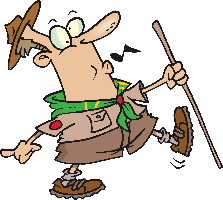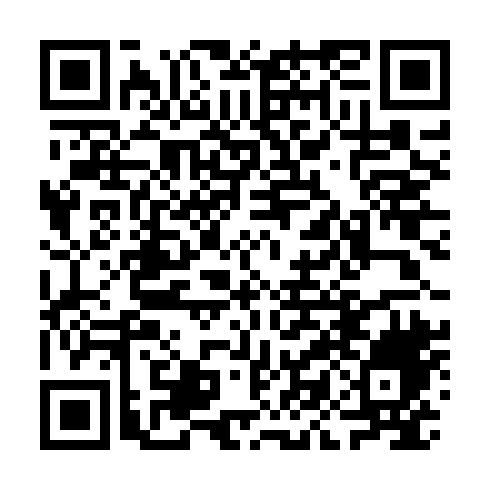Ceremonial Campfire, The
| Category: | Ceremonial Campfire |
|---|---|
| Props: | tinder |
| Props: | kindling |
| Props: | fuel |
| Props: | torch |
| Props: | candle |
| Props: | battery |
| Props: | matches |
| Props: | fire lay materials |
| Notes: | Includes classic Scout ceremonial fire-starting techniques like the flaming arrow and candle-in-a-can. |
| Notes: | Covers fire site preparation, safety, and traditional fire lays including pyramid, log cabin, and teepee styles. |
Welcome to the essential guide for mastering the art of campfire preparation and execution. Whether you're a seasoned outdoor enthusiast or a novice camper, understanding the intricacies of fire site preparation, establishing a woodpile, ceremonial fires, fire lays, and advanced lighting methods is crucial. Explore the comprehensive insights below to ensure a safe, memorable, and fun-filled campfire experience.
Fire Site Preparation
- Be sure you have permission to build a fire.
- Use an existing designated fire site whenever possible.
- Use a rake or shovel to clear a 10-foot area of leaves, burnable debris, and roots (roots can smolder underground for days).
- Ensure there are no overhanging branches (at least 12-foot clearance).
- Break down any ash mound and scatter the ashes within an existing fire scar.
- Avoid using layered rocks (like shale), which can shatter when heated.
- Place a metal fire bucket containing cool water within the fire circle. Soak the fire poker stick in the bucket beforehand.
- Have adequate amounts of tinder, kindling, and fuel convenient to—but outside of—the fire site. It takes about a double handful (adult-sized) of tinder to start a fire.
- Matches in a waterproof container and optional emergency fire starters should also be on hand.
Establishing a Woodpile
Your wood fire needs three types of materials:
TINDER: Burns as soon as it's touched with a match. It should be in pieces no thicker than a matchstick, but longer. Wood shavings, fuzz sticks, small twigs (especially from evergreens), dry weeds, fat pine, or thin bark from dead trees all work well. Avoid grasses or leaves that burn fast but briefly. Consider storing tinder in a sealed coffee can to keep it dry.
KINDLING: Dry sticks and twigs, gradually increasing in size from just above tinder size to about the thickness of your thumb and 6-12 inches long. They must catch fire quickly before the tinder burns out. Dead, dry branches from trees are excellent kindling.
FUEL: Larger wood that sustains the fire. Ranges from slightly larger than kindling up to full-sized logs. Fuel can include charcoal or seasoned wood. Avoid crumbling, rotten wood—it smolders and smokes without producing heat. In some areas, you may need to bring your own fuel.
Set up your woodpile outside the 10-foot cleared area. Sort wood by size. Stack it on parallel pieces of wood to keep it off damp ground, and cover it with a tarp or plastic during rain or overnight.
Use dry, split wood. Avoid green or rotten wood. Try not to add wood after lighting the fire—it disrupts the program and complicates extinguishing. Let the fire die down naturally as the program ends.
Ceremonial Fires
The fire is the focal point of a campfire gathering. It should light quickly, burn brightly, and last only as long as the program. NEVER LEAVE A FIRE UNATTENDED OR TO BURN OUT ON ITS OWN. Responsible fire use means ensuring it is safely lit, properly maintained, and thoroughly extinguished. Always have the means to put out the fire ready before you light it.
Fire Lays
Common campfire lay styles include:
Pyramid
Starts with a base of 4-6 inch diameter logs, topped with progressively smaller logs. Tinder and kindling go in the center. Light it from a small platform near the top. Coals fall inward, feeding the fire downward.
Log Cabin
Built like a small log cabin. Two large logs form the base, and kindling is placed in the center. Leave a draft opening at the bottom to promote airflow.
Teepee
Wood is stacked vertically with tops meeting like a teepee. Stick the base ends into the ground. Place tinder and kindling in the center and light from the bottom.
Building a Wood Fire
- Kneel with your back to the wind. Use three kindling sticks to form an A-shaped frame.
- Place two handfuls of tinder at the top of the A, leaning against the crossbar. Leave a tunnel at the base for match access.
- Strike matches away from your body. Hold the flame beneath the tinder until it catches. Add more tinder and kindling as needed, piece by piece.
- Allow room for air circulation. Add fuel gradually, increasing size slowly. The fire should not exceed the size of your largest cooking pot base.
- LIQUID FIRE STARTERS ARE PROHIBITED!
- NEVER LEAVE A FIRE UNATTENDED!
- Extinguish thoroughly by sprinkling with water and stirring. The fire is out when you can hold your hand just above the ashes and feel no warmth. Never pour water into a stone fireplace—remove coals to an external fire ring first.
Lighting the Ceremonial Camp Fire
AVOID CHEMICAL STARTERS AND FLAMMABLE LIQUIDS! They're dangerous and unpredictable.
The fire may be lit simply with a match or through a more dramatic ceremony. A lighted torch might guide participants in and then ignite the fire. You might also try one of these "magical" methods:
Candle in a Can
Build your fire around a tin can hiding a candle on a board. A string attached to the board allows a hidden helper to pull the candle out at the right moment. The candle—lit beforehand—then appears to magically start the fire.
Torches or Candles
Torches or candles carried by one or more participants are a traditional and effective method—and a good backup in case fancy tricks fail.
Make a torch by wrapping dry tinder in a ball and tying it to a stick with twine. A cotton ball soaked in petroleum jelly, held with light wire, also works well. Test it ahead of time. When ready, the bearer lights the torch and walks ceremoniously to the fire lay, placing it atop or inside.
Advanced Methods
Battery Method
Wrap matches in very thin copper wire and run the ends to a battery. At the cue, connect to the terminals. The wire heats and ignites the matches. Keep the battery safely away from the fire.
Flaming Arrow Method
- Method 1: Drive a stake into the ground beyond the fire. Stretch a black wire to a nearby tree and suspend a tinder-wrapped arrow on spools. Light the arrow and release it to ride the wire to the fire. Test ahead of time. Once lit, cut the wire. Keep everyone clear of its path.
- Method 2: Sling a wire over a high branch (about 6 meters). Attach two logs to one end, and tie the other end (via fishing line) to the campfire center. Suspend the arrow and light it. When it hits, it burns the fishing line and drops the wire out of sight—no cutting required. Stand clear.

